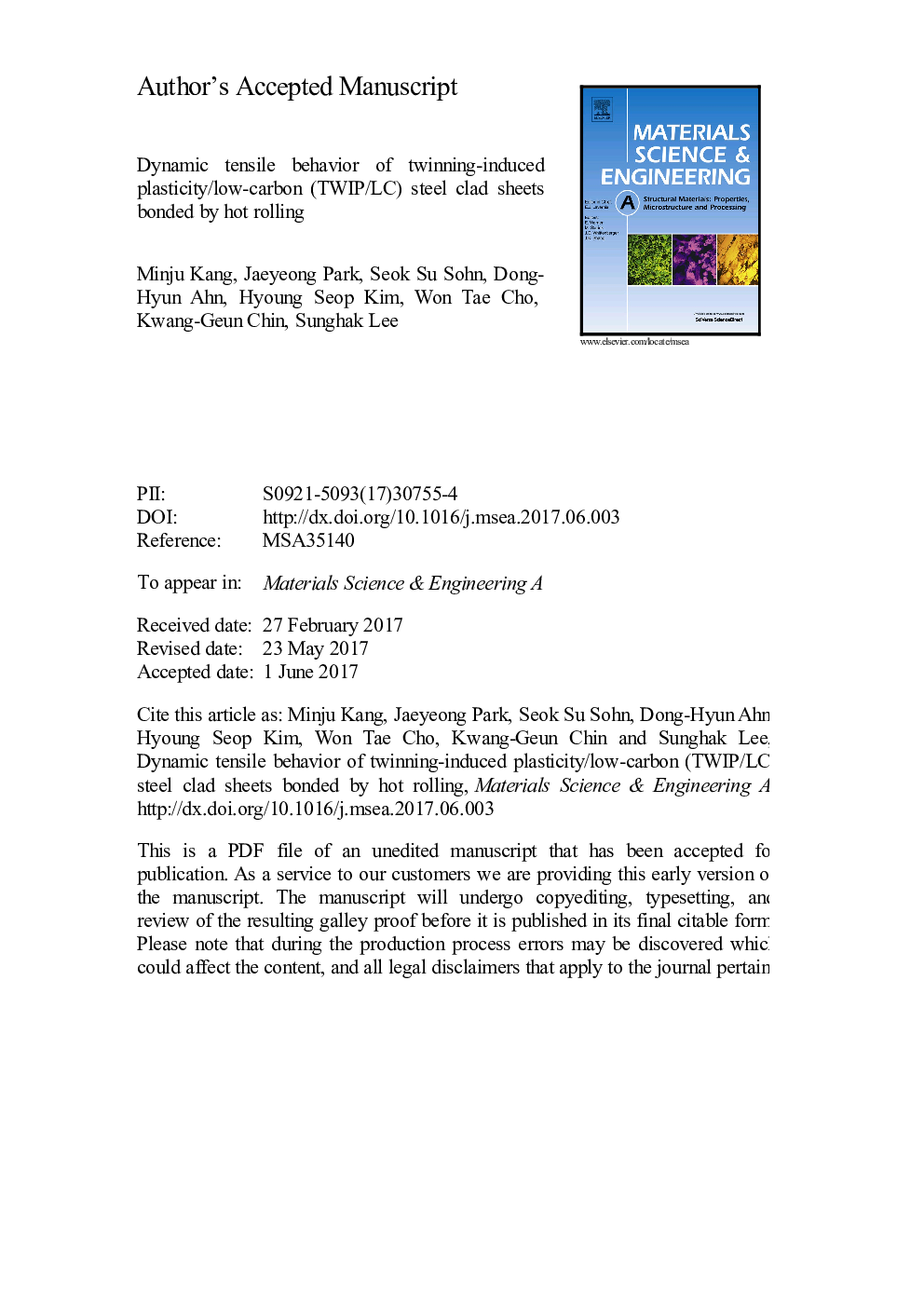| Article ID | Journal | Published Year | Pages | File Type |
|---|---|---|---|---|
| 5455459 | Materials Science and Engineering: A | 2017 | 37 Pages |
Abstract
Commercialization of TWinning Induced Plasticity (TWIP) steels has been delayed because of deteriorated surface quality, delayed fracture, and liquid metal embrittlement in spite of their excellent tensile properties. In order to complement these drawbacks, TWIP/low-carbon (LC) steel clad sheets were fabricated by hot rolling, and their dynamic tensile properties were measured by a Hopkinson tensile bar. In all TWIP/LC clad sheets, TWIP/LC interfaces were well bonded without pores or voids by mechanical and metallurgical bonding. Thanks to well-activated dynamic Hall-Petch effect in the TWIP steel region of the clad sheets, the dynamic strength and ductility of the clad sheets were higher than quasi-static ones because the twin formation was more activated under the dynamic loading. They were also considerably higher than those calculated by a rule of mixtures because the interfacial area took most of dynamic applied tensile stress and strain. The present TWIP/LC clad sheets covered wide ranges of excellent dynamic tensile strength and ductility (e.g., 792-1076Â MPa and 50-57%, respectively) by controlling the volume fraction of TWIP region, which can readily discover new applications for automotive structural steel sheets.
Related Topics
Physical Sciences and Engineering
Materials Science
Materials Science (General)
Authors
Minju Kang, Jaeyeong Park, Seok Su Sohn, Dong-Hyun Ahn, Hyoung Seop Kim, Won Tae Cho, Kwang-Geun Chin, Sunghak Lee,
